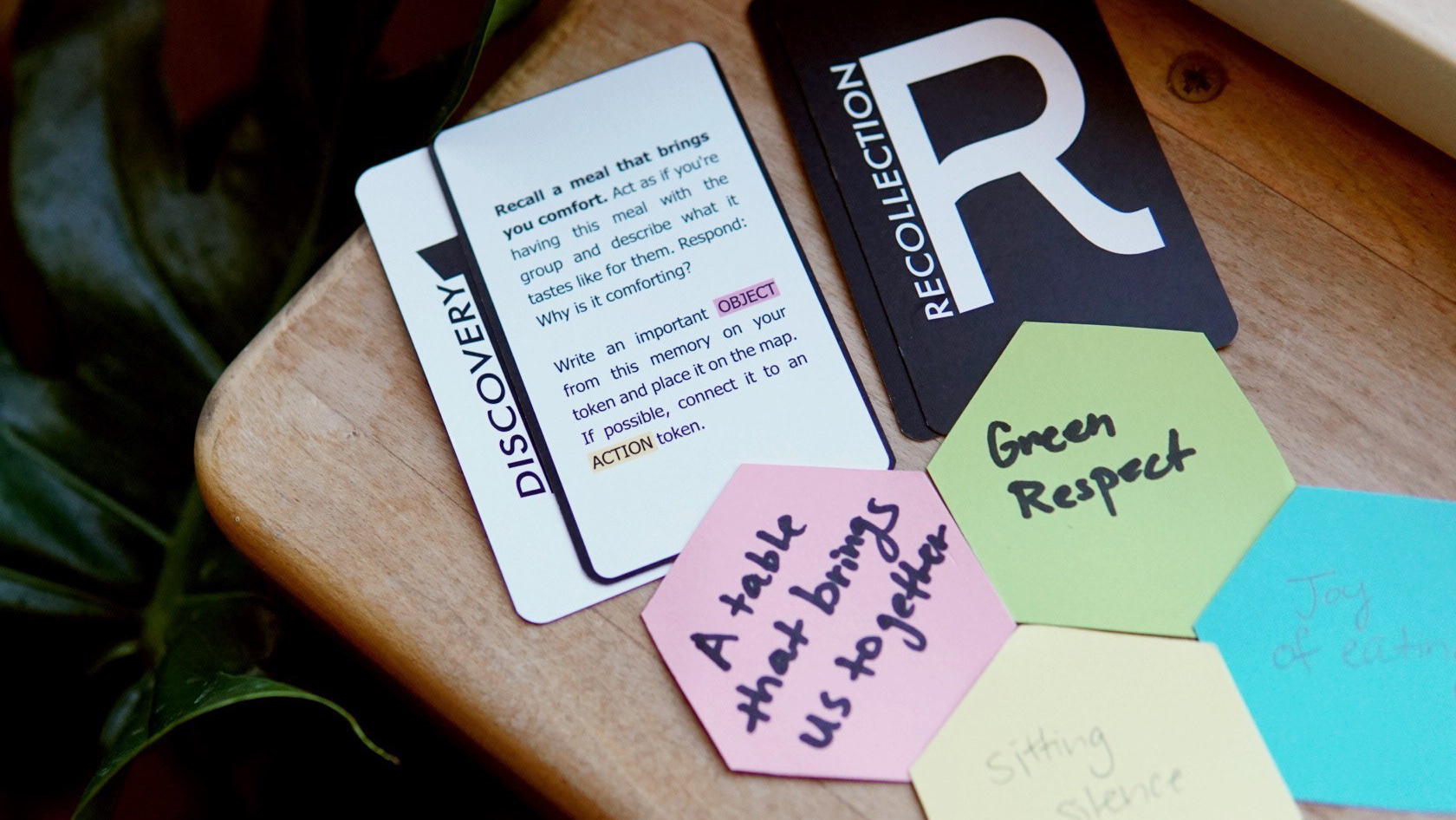How might we foster adult SEL to positively impact student SEL practices?
Social-emotional learning (SEL) is a research-based educational method aimed at fostering social and emotional competences of students. However, SEL looks differently in schools, as each institution is expected to choose a curriculum from a range of programs offered on the market and adapt it to fit their needs. This project investigated how participatory tools could support teachers in implementing SEL programs at their schools. It was conducted in collaboration with Prague City University and University of the Arts London, Design School.
Interested in a co-design tool for your organization? Contact us.
APPROACH
Learning sessions were conducted with faculty and administrators at three independent private K-12 schools in the United States. To help encourage storytelling from participants of their lived experiences with SEL implementation, we provided three activities on Miro:
1. Association Activity. Participants were provided with a collection of artwork images and instructed to select one that best represented each of two conditions: the current state of SEL at their school and their ideal SEL situation.
2. Stakeholder Mapping. Participants received a set of tokens representing various school stakeholders, including staff, parents, and coaches. They were asked to position these tokens on a map featuring three concentric circles labeled with varying levels of engagement: low, medium, and high.
3. Card Sorting. Participants were presented with a deck of cards featuring various positive values. The task was to select three cards that represented the driving forces behind their relationships with other adults in their school community.
THE TOOL
Using key insights from our research, we co-designed and tested SEL teacher journals that included self-reflection and relationship-building activities for faculty and staff. We used the zine format to make it easier for teachers to access the prototype and print it on their own. The journal features three self-guided activities for groups:
1. Self-Reflection. The journal's opening page prompts teachers to choose a positive value like community or joy. They reflect on a personal memory as a student that embodies this value and record an idea in the journal. Teachers are also asked to collect memories from fellow faculty and staff members using the same prompt for journal entries.
2. Connection to the Classroom. Teachers are then prompted to link the chosen value to their core curriculum or subject. They are again encouraged to record personal memories and collaborate with colleagues from their department to gather more insights.
3. Collaboration with Colleagues. Building upon the outcomes of the other two activities, teachers co-create classroom designs with colleagues. They record achievements and how they can share their new knowledge with the rest of the school.
OUTCOMES
Feedback showed that although teachers felt the journals were accessible and easy to use, they expressed the need for modifications, such as a larger size and a digital format. Currently, we are in the process of iterating on this prototype to include multimodal versions. We are also working on addressing broader issues of capacity building among faculty to better support the overall SEL implementation process.
“This journal meets teachers where they are.”
— Middle School Teacher
Interested in a novel co-design tool for your organization? Contact us.
__________________________

